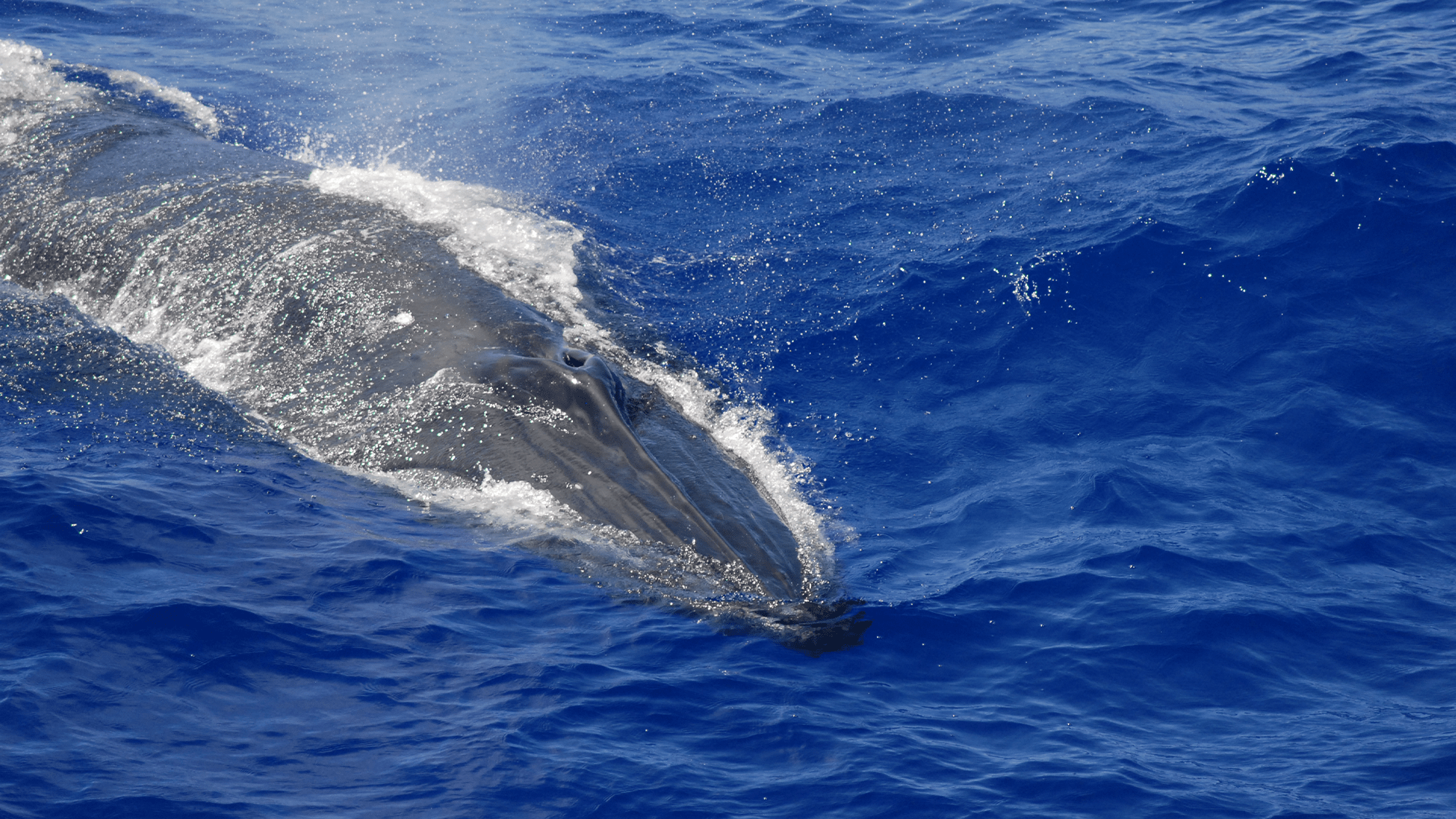Gadgets
Elusive whale’s Star Trek-like call could be their version of ‘Marco Polo’

Whales are famous for their vocalizations, from the haunting songs of humpback whales to the clicks and whistles of orcas and other toothed cetaceans. The elusive Bryde’s whale, which is not extensively studied, produces a unique sound known as “Biotwang.” This unusual noise, characterized by a mix of low and high-frequency pings, has an electronic or mechanical quality unlike the melodic songs of some baleen whales.
Recently, recordings of this enigmatic vocalization have been added to a new repository, facilitating further research on whale vocalizations across eight different species. These findings are detailed in a study published on September 18 in the journal Frontiers in Marine Science.
[Related: We finally know how baleen whales make noise.]
What is Biotwang?
Bryde’s whales, pronounced broodus, inhabit the central and western North Pacific. They are less well-documented compared to other baleen whales like humpbacks or right whales.
“Bryde’s whales exhibit different feeding patterns compared to other baleen whales, as they are believed to feed year-round, migrating between low and mid latitudes while following their food sources across the ocean,” explains study co-author and NOAA research oceanographer Ann Allen to Popular Science.
Due to their complex movement patterns, Bryde’s whales are challenging for scientists to locate. The team captured several of these sounds in 2014 using autonomous acoustic recordings in the Mariana Archipelago near Guam.
Biotwang is produced by Bryde’s whales in the Pacific Ocean. This image of a Byrde’s whale was spotted during a NOAA cetacean survey in the Mariana Archipelago in 2015. CREDIT: NOAA Fisheries/ Andrea R. Bendlin (NMFS MMPA-ESA Permit #15240)
“We consistently detected it in the Western North Pacific region, suggesting that this call may be specific to a population found only in this area,” notes Allen. “This is significant because whale calls can travel long distances underwater, enabling year-round monitoring of whales without direct observation, but this requires knowledge of the species producing the sound.”
While the whales themselves remain elusive, understanding the purpose of biotwang poses an additional challenge. The team observed Biotwangs from individual whales, small mixed groups, and mother-calf pairs during migration.
“It’s possible that Biotwang serves as a contact call, akin to a marine version of ‘Marco Polo’,” suggests Allen. “However, further information is needed before definitive conclusions can be drawn.”
Twang, boings, and a lot of data
NOAA’s team had long-term audio recordings of parts of the Pacific Ocean dating back to 2005, enabling them to identify Bryde’s whales as the source of this distinctive sound. Collaborating with a team of researchers from Google, they analyzed the recordings. Data scientists utilized the Biotwang recordings to enhance their multi-species cetacean AI model for analyzing a vast array of underwater sounds in the Pacific Ocean. Given the abundance of noise from various sources underwater, such as vessels, marine life, and oceanic movements, deciphering undersea sounds can be challenging.
“Biotwang consists of a low-frequency element followed by a higher-frequency component,” explains study co-author and Google data scientist Lauren Harrell to Popular Science. “To me, it actually resembles the original ‘ping’ on the Starship Enterprise from Star Trek.”
In addition to distinguishing Bryde’s whales based on their Biotwang, the model can also aid in predicting humpback whale migrations more accurately and identifying sounds produced by minke whales, commonly referred to as the “minke boing.” These sounds were initially detected by submarines off the coasts of California and Hawai’i in the 1950s and described as a “metallic-like ring.”
[Related: We can protect whales from ship strikes by translating their songs.]
“The history of the minke boing mirrors that of Biotwang, as it was initially a mysterious sound that scientists later linked to a specific whale species,” notes Harrell. “By incorporating minke labels into the model, we were able to identify the minke boing by revisiting past data samples.”
The model developed by Harrell and her team now enables researchers to decode the vocalizations of up to eight different whale species in a single recording. This information can be used to track the distribution of these sounds across different regions and times, aiding in the development of more effective conservation strategies.
“Having a model that can efficiently analyze these long-term datasets, identify and classify the likely presence of various species, and further categorize them by time and frequency, greatly enhances our ability to study these species,” concludes Harrell.
-

 Destination9 months ago
Destination9 months agoSingapore Airlines CEO set to join board of Air India, BA News, BA
-

 Breaking News10 months ago
Breaking News10 months agoCroatia to reintroduce compulsory military draft as regional tensions soar
-

 Gadgets4 months ago
Gadgets4 months agoSupernatural Season 16 Revival News, Cast, Plot and Release Date
-

 Tech News1 year ago
Tech News1 year agoBangladeshi police agents accused of selling citizens’ personal information on Telegram
-

 Productivity12 months ago
Productivity12 months agoHow Your Contact Center Can Become A Customer Engagement Center
-

 Gadgets1 month ago
Gadgets1 month agoFallout Season 2 Potential Release Date, Cast, Plot and News
-

 Breaking News10 months ago
Breaking News10 months agoBangladesh crisis: Refaat Ahmed sworn in as Bangladesh’s new chief justice
-

 Toys12 months ago
Toys12 months ago15 of the Best Trike & Tricycles Mums Recommend























